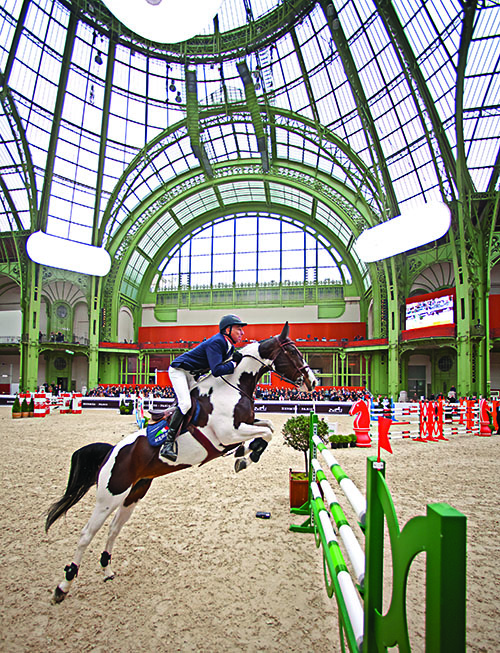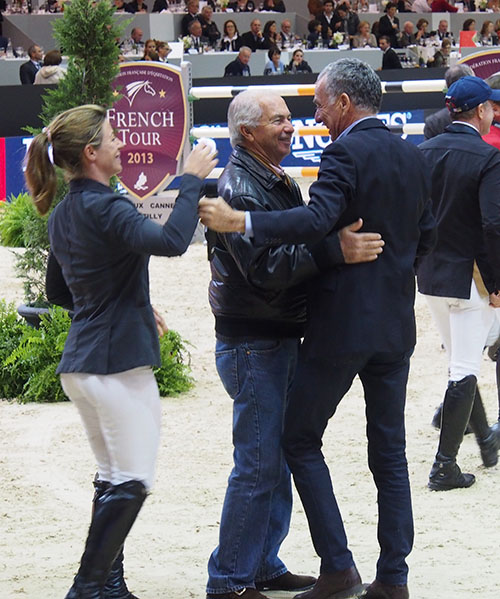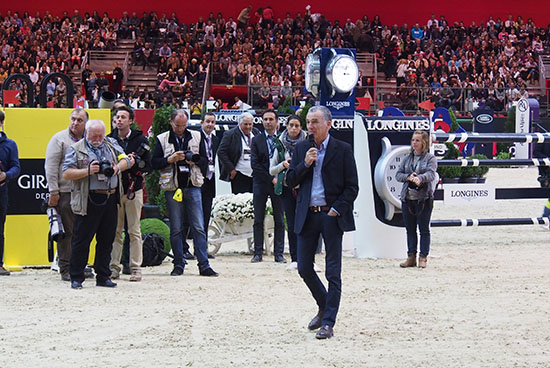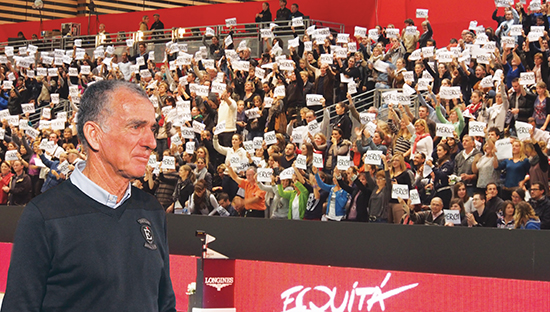Michel Robert – the Inspiration moves on…
One of the inspirational figures in the world of showjumping has retired.
Just take a look at his record: two Olympic Games, Seoul with La Fayette, Barcelona with Nonix, two WEGs, The Hague with Sissi de la Lande, and Aachen with Galet d’Auzay, two World Championships, Dublin with Ideal de la Haye and Aachen with La Fayete, and nine European championships from Hickstead in 1983 to Madrid in 2011.
After 44 years of competing Michel Robert has decided to move on, to quit the world of competitive riding, so I asked the very obvious question:
Why in November 2013 have you decided to call it a day?
“There is a time for everything. I have wanted to compete at the top level all my life, for 45 years, and now I am entering a time of reflection, and I look back and think ‘what do I want really? Do I really want to keep going the same way, or do I want to do something else. After a lot of thought, I have decided that it is time for change.”
THE THOUGHTS OF MICHEL ROBERT:
We have observed the evolution of methods used for teaching riding. From the military methods with ‘blows and injuries’ we moved on to the stage involving ‘100% technique’: the physical aspects, the position or seat. Today the aspect we address is above all attention to harmony of the body and mind. We are in search of another form of riding, allowing each individual to express his profound being, without cheating oneself and developing our qualities without blaming ourselves for our weaknesses.
(Page 161, The Secrets and Method of a Great Champion)
Reading your book, there is a strong spiritual dimension to your writing about horses and horsemanship, do you find yourself at odds with showjumping today with the emphasis on money, money and more money – and not so much emphasis on horsemanship?
“That made my decision easier, it would have been harder in the past not to be part of this sport. I stayed at the top, always with my own philosophy of respecting the horse’s welfare – no medications, not for me, and not for the horse. For me it was very important to respect the horse and for the horse to live a good life. A good life is not trying to use tricks, not cheating.”
THE THOUGHTS OF MICHEL ROBERT:
If you pat or congratulate your horse, it will try and find new opportunities for getting pleasure out of what is does by remaining attentive and doing its best. The horse that is only punished for the mistakes it makes, will on the contrary become reluctant and sad. Be attentive and aware, while always controlling your reactions. Certain riders only pat their horses because someone is watching them or punish them because they have had a bad night.’
Punishments must only be used if the horse abandons the framework of the exercise. The objective is to make the horse understand that beyond certain limits, it enters an area of discomfort. This may result in progressively stronger actions: legs, spurs, and then the whip. When on the contrary, the horse reacts correctly to a request, the rider must reward it immediately, and the horse will understand that it is in its interest to remain within the comfort zone.
The rider must be perfectly conscious of his actions. Acting in anger, when nervous or feeling resentful, interrupts communication with the horse.
(Page 78, The Secrets and Method of a Great Champion)
George Morris always says that what he thinks is wrong with showjumping today is that there is not enough time, everything is in a rush – in a rush at the show, in a rush with the horses… that when he enjoyed showjumping there was more time…
“The best result is not the quickest, the fastest solution. I was so happy to see Bosty win the European Championship, because he is truly a horseman. He has a special technique, that is for sure, but he loves the horse and he respects the horse. It is important that a championship can be won by a natural horseman, to win a big championship without ‘preparation’, without special medications. I think when the rider understands life, and the good life for the horse, then they will change their own thinking. I have only one result in my life where I won by tricking, with an artificial aid, and the result was not the same – I would never do it again.”
THE THOUGHTS OF MICHEL ROBERT:
With a well-trained horse on the flat and in good physical shape, a jumping show becomes a game in which all that remains to be done is progressively work on the height and variety of the fences.
With a horse in good shape, there is no need to resort to chemical products, vitamins, infiltrations and other ‘concealing agents’. Personally I eliminated all that more than 10 years ago.
A horse does not go lame or become ill by chance. If it does, it is rather like a red light blinking: ‘Be careful, you are not training correctly.’ Camouflaging this problem with chemical products is like attacking the red light with a hammer so it stops blinking. Why hide from the truth? A given rider generally finds that most of his horses suffer from the same pathologies.
Veterinary surgeons are well aware of this. Why is it that in a certain stables all the horses have problems with their hocks? And why is it that in another stable, it is always the vertebra that hurts?
In these conditions, the rider is face with a number of solutions: * he can change his horse… but this is very expensive! * he can call the vet…and hit the red warning light with a hammer, or * he can adopt the most viable long-term solution, he can take the time to search for the primary cause of this pain: perhaps poor ground, an unsuitable way of training, the rider’s poor seat…
(page 99, The Secrets and Method of a Great Champion)
Who have been the great influences on your thinking about horses?
“My father I think is the greatest influence. He was a simple doctor, he used to visit his patients in a horse drawn carriage. He loved horses, and the passion went on to me…”
In all the time you have been competing, what has been the most important lesson?
“There are so many lessons, every day is a new lesson, a new experience and that is a new lesson.”
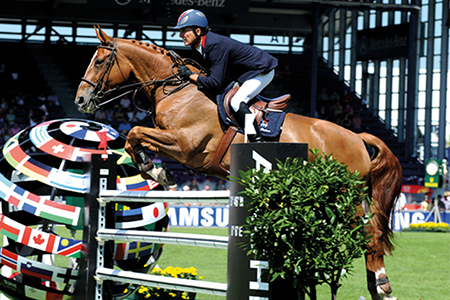
THE THOUGHTS OF MICHEL ROBERT:
Personally, when I ride a horse for the first time, I try to make myself as discreet as possible on its back. I am totally focused on listening to its body language without reaction to its attitude. During this lapse of time, I analyse its defects and qualities without doing anything at all.
Work starts with simple things at a slow pace: a bend, a halt. Simple questions addressed at obtaining the right answer easily. This provides an opportunity for congratulating the horse and rewarding it.
The horse is instantly trusting… and it becomes possible to establish a dialogue. Certain horses are lucky enough to be ridden by excellent riders, who work with good humour and respect. These horses understand very quickly. For others establishing trust takes longer. As soon as the feeling comes through, harmony is created. Exercises can be carried out exactly as programmed in the rider’s mind.
(page 173, The Secrets and Method of a Great Champion)
Are there many young riders in France who are listening to what you say?
“Yes, I think so. To give an example in France, there is Penelope Prevost, a good example of a horse and rider who have had good results with good equitation and respect for the horse – a passion not just for the victory or the money.”
THE THOUGHTS OF MICHEL ROBERT:
Whatever the circumstances, as far as results are concerned, the reaction must depend on the objective you started out with: ‘What is it I really expect from this class? Was it a training round, a round for getting either the horse or myself fit or did I ride to win?’ If the horse goes clear within the time I had established before the class, I am satisfied. Winning is totally relative. Depending on who else is competing in the same class I might win or not even be in the running. This however does not affect my performance. One can only take stock of the situation later, after a number of competitions ridden, not just one. What is important is not being the best, but doing one’s best.
(page 191, The Secrets and Method of a Great Champion)
Michel Robert, we salute you.
This article originally appeared in the December 2013 edition of The Horse Magazine


